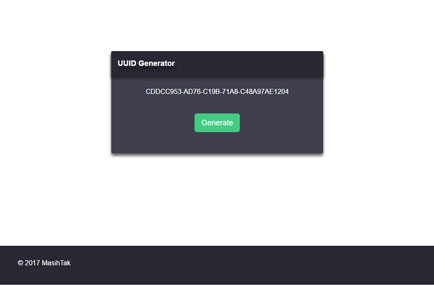
If there is an already attached entity or if the current entity is detached, an exception is thrown. The persist method takes a transient entity and attaches it to the current Hibernate entityManager. We get both a SELECT and an INSERT this time: Let’s see what happens when issuing a merge instead: New Post().setTitle("High-Performance Java Persistence") This example uses a BINARY(16) column type, since the target database is = "post")
#Jpa uuid generator generator
By simply omitting the identifier generator definition, Hibernate will consider the assigned identifier. The assigned generator allows the application logic to control the entity identifier generation process.


Otherwise we can store the bits as a byte array (e.g.

Some databases ( PostgreSQL, SQL Server) offer a dedicated UUID storage type.From the most efficient to the least, here are our options: There are several ways to represent a 128-bit UUID, and whenever in doubt I like to resort to Stack Exchange for an expert advice.īecause table identifiers are usually indexed, the more compact the database type the less space will the index require. In my previous post I talked about UUID surrogate keys and the use cases when there are more appropriate than the more common auto-incrementing identifiers. In this article, we are going to see how the UUID entity attributes are persisted when using JPA and Hibernate, for both assigned and auto-generated identifiers. So, enjoy spending your time on the things you love rather than fixing performance issues in your production system on a Saturday night! Well, Hypersistence Optimizer is that tool!Īnd it works with Spring Boot, Spring Framework, Jakarta EE, Java EE, Quarkus, or Play Framework. Follow having a tool that can automatically detect JPA and Hibernate performance issues.


 0 kommentar(er)
0 kommentar(er)
